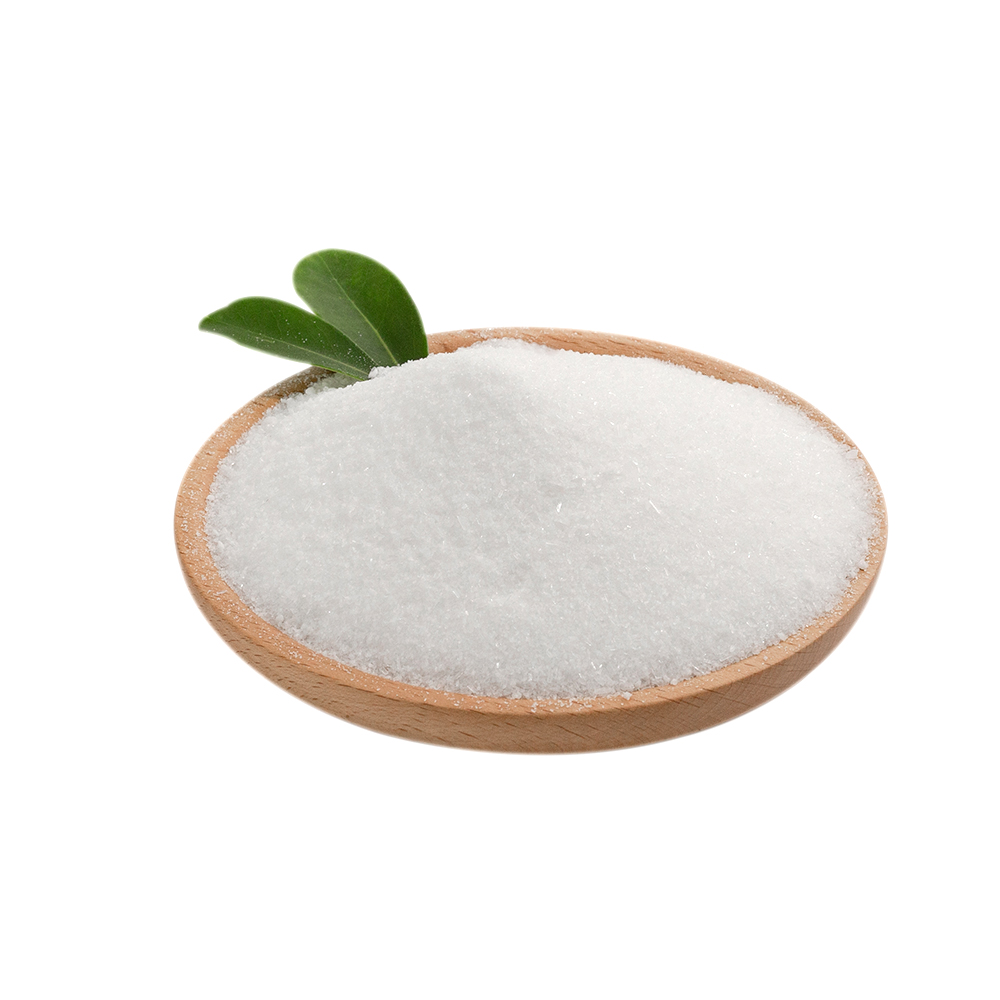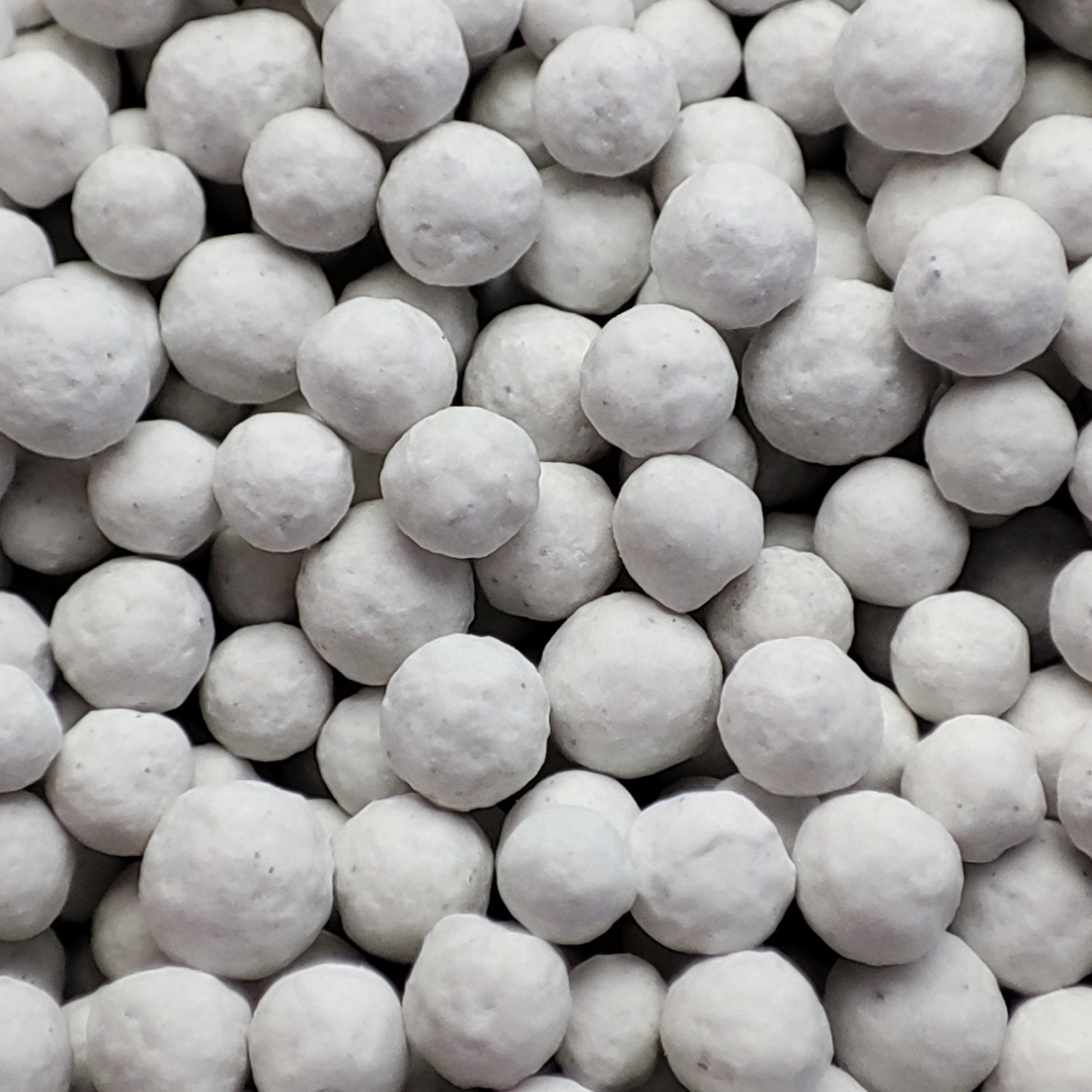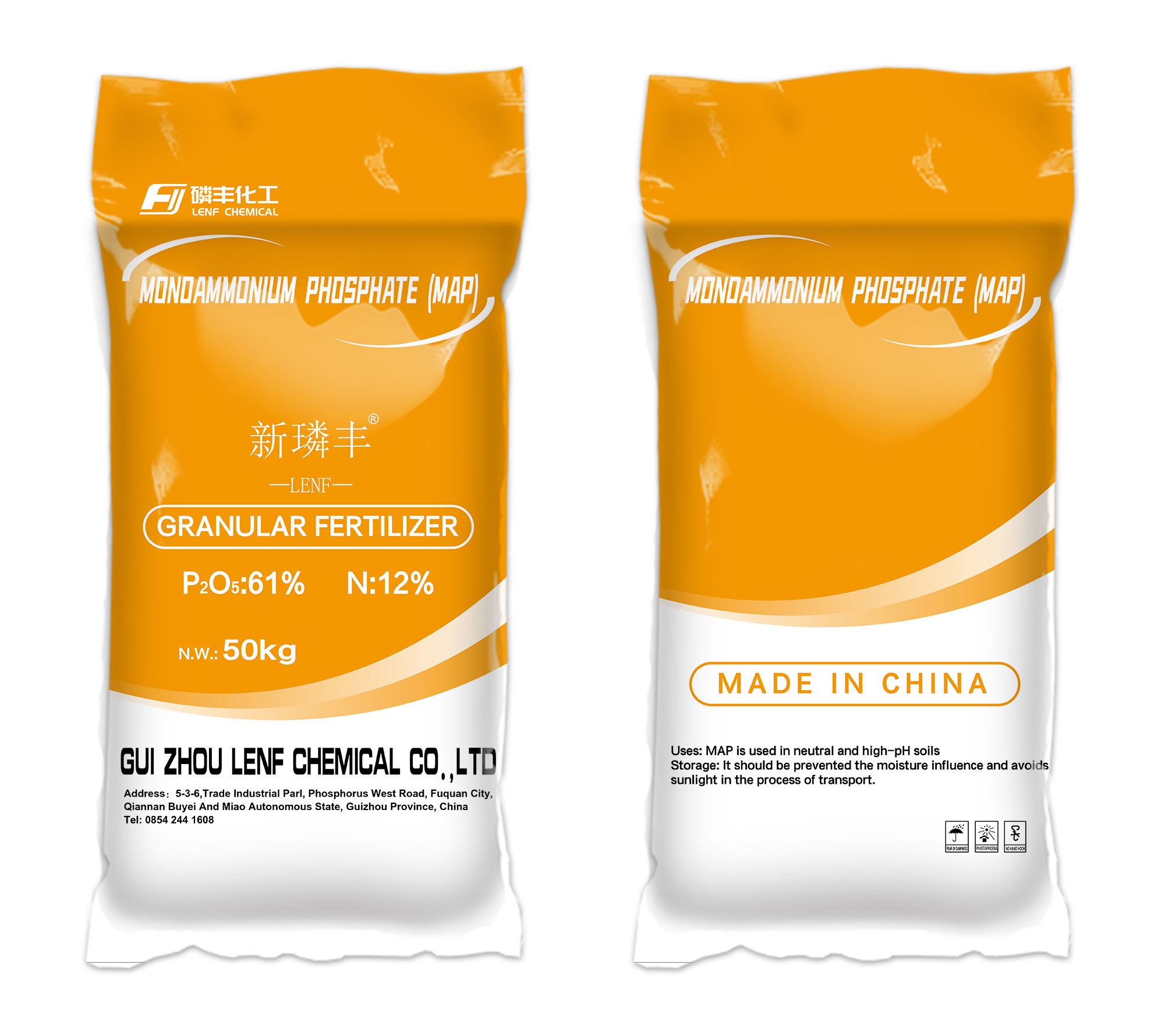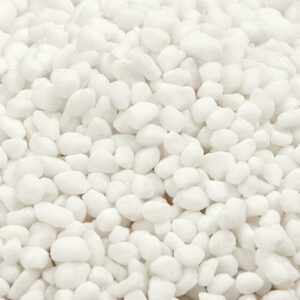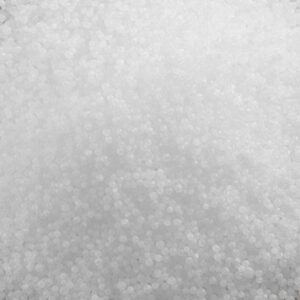Description
Monoammonium phosphate (MAP) is a widely used source of P and N. It is made of two constituents common in the fertilizer industry and has the highest P content of any common solid fertilizer.
Chemical Properties
Chemical formula: NH4H2PO4
Water solubility (20℃) 370 g/L
Solution pH 4 to 4.5
Mono ammonium phosphate (MAP or ammophos) is a complex, highly concentrated, ballastless, water-soluble mineral fertilizer. It is not hygroscopic and has a granular form with equal in size granules because of which it is dissipated evenly along the soil surface. It contains two main nutrients in its composition — 12% nitrogen (N) and 61% phosphoric pentoxide (P2O5) or in total 63% of active substance, which makes it easily absorbed by plants. Amorphous is with the highest percentage of water-soluble P2O5 (min. 52%) among phosphorus fertilizers. The availability of phosphorous ions creates conditions for more energetic absorption of ammonium nitrogen. Phosphorus deficiency reflects negatively on the blossom formation, the seeds and the fruits which results in lower yields.
Mono ammonium phosphate is appropriate for the fertilization of all soils and crops. Because of the fact that it is water-soluble, it has the properties of fast-acting phosphorus fertilizer, and the low mobility of the phosphorus in the soil allows its use for main, stocking as well as periodic fertilization.
This fertilizer is input with the main treatment of the soil or prior to sowing. It is also used in the main and pre-sowing fertilization of all field vegetables, fruit crops, grape vines, herbs and flowers.
It is stored in covered, cold and dry storehouse premises. Heating and mixing with water are not desirable. It is transported packaged or in bulk.
Monoammonium Phosphate Specification:
Composition: |
|
| Items | Standard |
| Appearance | White Crystal or Granular |
| N /% | 12.00 |
| P2O5 /% | 61.00 |
| K2O /% | 0.00 |
| S /% | 2.00 |
| CaO /% | 0.00 |
| MgO /% | 0.4-0.6 |
| Size | Crystal or granules 1-5 mm |
| water solubility, % of total P2O5 | 90 |
| citrate solubility, % of total P2O5 | 95 |
Application: |
|
| Period | Autumn, Spring |
| Method | #1.Main The main way to fertilize. Uniform distribution of fertilizer elements on the soil surface, maintaining roughly the same distance between solid fertilizer granules or liquid fertilizer drops. #2.During sowing Fertilizing simultaneously with crop seeding. The main purpose is to provide effective plant nutrition at the initial stages of development and growth. |
| Crops | All crops |
| Soils | Neutral and alkaline soils |
Agricultural Use
MAP has been an important granular fertilizer for many years. It is water soluble and dissolves rapidly in the soil if adequate moisture is present. Upon dissolution, the two basic components of the fertilizer separate again to release NH4+ and H2PO4–. Both of these nutrients are important to sustain healthy plant growth. The pH of the solution surrounding the granule is moderately acidic, making MAP an especially desirable fertilizer in neutral and high pH soils. Agronomic studies show that there is no significant difference in P nutrition from various commercial P fertilizers under most conditions. Granular MAP is applied in concentrated bands beneath the soil surface in the proximity to growing roots or in surface bands. It is also commonly applied by spreading across the field and mixing into the surface soil with tillage. In powdered form, it is an important component of suspension fertilizers. When MAP is made with especially pure H3PO4, it readily dissolves into a clear solution that can be used as a foliar spray or added to irrigation water. The P2O5 equivalent content of high-purity MAP is usually 61%.
Management Practices
There are no special precautions associated with the use of MAP. The slight acidity associated with this fertilizer reduces the potential for NH3 loss to the air. MAP can be placed in close proximity to germinating seeds without concern for NH3 damage. When MAP is used as a foliar spray or added to irrigation water, it should not be mixed with calcium or magnesium fertilizers. MAP has good storage and handling properties. Some of the chemical impurities (such as iron and aluminum) naturally serve as a conditioner to prevent caking. Highly pure MAP may have a conditioner added or may require special handling to prevent clumping and caking. As with all P fertilizers, appropriate management practices should be used to minimize any nutrient loss to surface or drainage water. A high-purity source of MAP is used as a feed ingredient for animals. The NH4+ is synthesized into protein and the H2PO4– is used in a variety of metabolic functions in animals.
